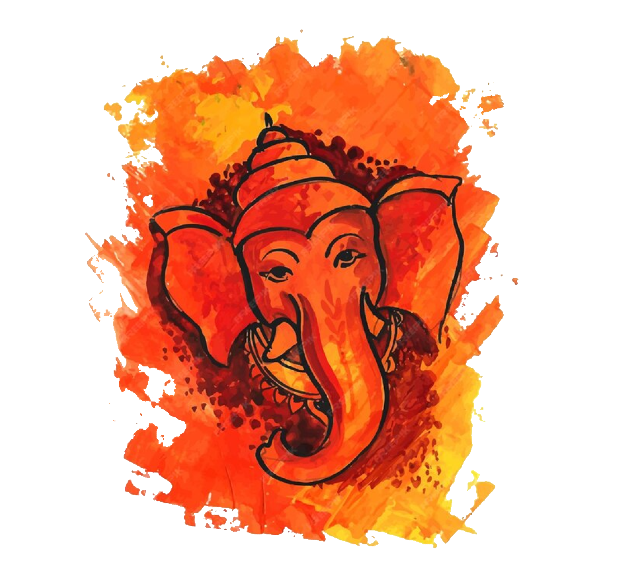
The Three-Eyed Deity
Tryakshara Ganapati
Ganesha’s Third Eye Symbolism and Its Spiritual Significance
Heading for Article :-
Tryakshara Ganapati : The Embodiment of the Sacred OM
Introduction :
Tryakshara Ganapati, the nineteenth form among the 32 divine manifestations of Lord Ganesha, is a sacred representation of the primordial sound, “OM.” This form of Lord Ganesha signifies the importance of the three-letter word ‘A-U-M’ or ‘OM,’ a symbol of profound spiritual significance. Tryakshara Ganapati is characterized by unique features and iconography that convey spiritual knowledge and self-realization.
Iconography and Attributes :
Tryakshara Ganapati possesses distinctive iconographic features:
Golden Complexion: He is adorned with a golden complexion, symbolizing his divine radiance and the sacred nature of the sound ‘OM.’
Third Eye: The Lord has a third eye on his forehead, denoting his insight into the spiritual realm and the ability to perceive the unseen.
Four Arms: Tryakshara Ganapati has four arms, signifying his divine powers and ability to bestow blessings.
Big Floppy Ears: His prominent, big floppy ears represent attentive listening and the importance of paying heed to the sacred sound of ‘OM.’
Hands and Attributes :
Single Tusk: He holds his own broken tusk, symbolizing sacrifice and detachment.
Elephant Goad (Ankusa): He wields an elephant goad, signifying his control over the mind and ego.
Noose (Pasha): He carries a noose, symbolizing his power to remove obstacles and bind negativity.
Mango: One hand holds a ripe mango, a symbol of sweetness and divine bliss.
Worship and Significance :
Tryakshara Ganapati represents the profound spiritual significance of the sacred sound ‘OM,’ which is considered the most fundamental and elemental sound in Hindu philosophy. Worshipers who focus on this form of Lord Ganesha seek spiritual knowledge and embark on a journey of self-realization. Meditating on the beejakshara (seed syllable) ‘A-U-M’ each day is believed to guide devotees towards a deeper understanding of themselves and the universe.
Dhyana Mantra :
The Dhyana Mantra for Tryakshara Ganapati invokes his divine presence:
“Gajendravadanam Sakhshat Chalatkarna Suchaamaram
Hemavarnam Chaturbahum Pashankushadharam Varam
Svadantam Dakshine Haste Savyetvamraphalamtathaa
Pushkare Moodakam Chaiva Dharayantamusmaret.”
This mantra emphasizes the sacredness of ‘OM’ and its connection to Lord Tryakshara Ganapati.
Conclusion :
Although there is no specific temple dedicated exclusively to Tryakshara Ganapati, the Tirumakudalu temple in Narasipura, Karnataka, is one of the prominent temples where this form of Ganapati is venerated. Additionally, the temples in Chamarajanagar and Nanjangud in Mysore feature sculptures representing all 32 forms of Ganesha, including Tryakshara Ganapati.
Editor – Kaalchakra Team
[ Note – Before Concluding anything as a Finale, Please Go through Original Scriptures of Vaidik Literature Written in Sanskrit and Also with Meaning of That time of Language. Because English is a Limited language to Explaining the Deeper Knowledge of Vaidik Kaal. ]
